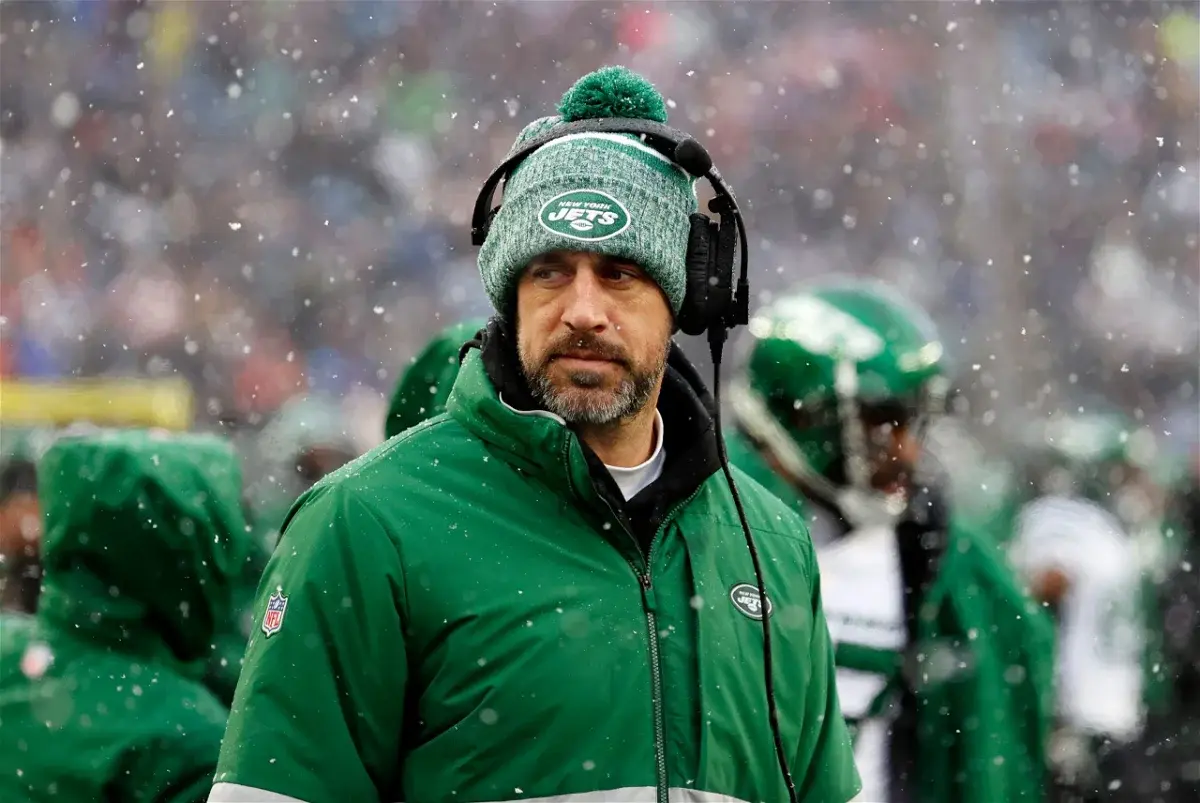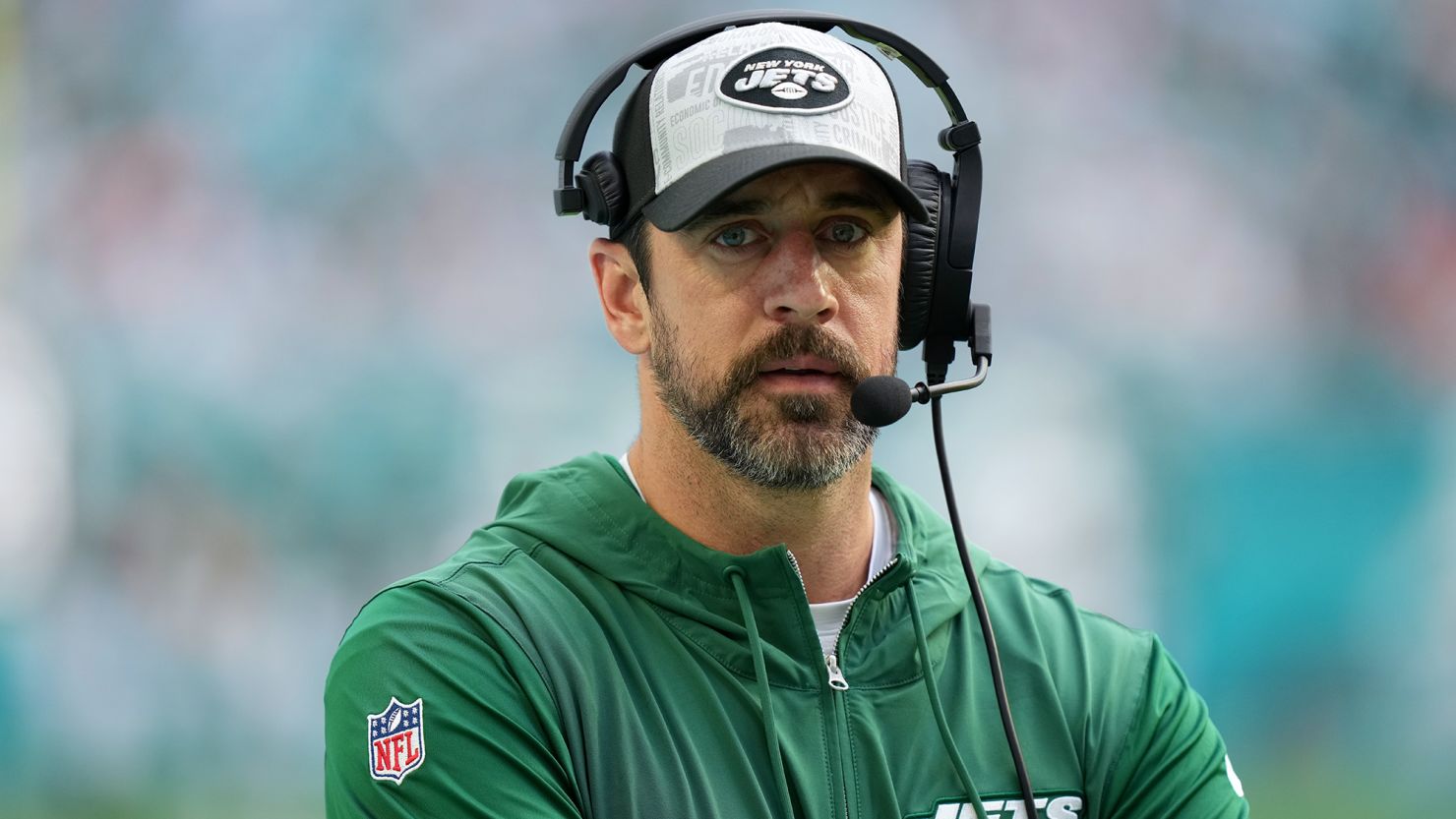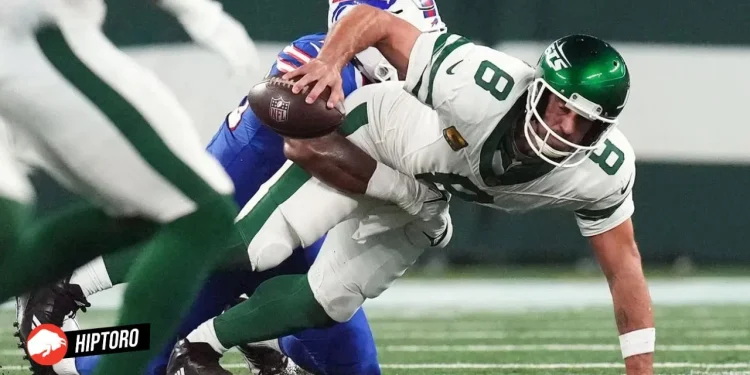The sports world watched in dismay as Aaron Rodgers, the newly minted quarterback for the New York Jets, suffered a devastating Achilles tendon rupture during his debut game against the Buffalo Bills. This injury, often a nightmare for athletes, threatened to sideline Rodgers indefinitely.
However, Aaron Rodgers’ journey back to the field has been nothing short of miraculous, defying expectations and setting new benchmarks for recovery in professional sports.

Aaron Rodgers’ Unexpected Comeback
After an illustrious 18-season tenure with the Green Bay Packers, Aaron Rodgers’ transition to the Jets was highly anticipated. Yet, his injury cast a shadow over this new chapter. Initially ruled out with an aim for a mid-January return, Rodgers shocked the sports community by being activated off injured reserve in just 77 days.
His appearance on the 2099th episode of The Joe Rogan Experience shed light on the rigorous rehab routine that facilitated this rapid recovery.

A Fusion of Traditional and Cutting-Edge Techniques
Rodgers’ approach to rehabilitation was multifaceted, incorporating both innovative medical procedures and traditional recovery methods. The quarterback’s surgeon employed a less common, yet highly effective, technique to address the tendon rupture.
Moreover, Aaron Rodgers took advantage of hyperbaric chamber therapy, known for its efficacy in reducing cellular inflammation, as part of his daily routine.
Diet played a crucial role in Aaron Rodgers’ recovery process. Emphasizing anti-inflammatory foods, Rodgers’ intake was heavily laden with bone broth, a nutrient-rich liquid known to enhance collagen levels and expedite the healing process. This meticulous attention to nutrition underscores the importance of a holistic approach to recovery.
Understanding Achilles Injuries
Achilles injuries are notorious for their debilitating impact on athletes’ careers, attributed to the tendon’s critical role in leg-to-foot movement. The severity of such injuries is compounded by the lengthy recovery period, typically spanning 9 to 12 months. Rodgers’ case, however, stands as a testament to the potential for significantly shorter recovery times under optimal rehab conditions and medical care.
The Factors Behind the Injury
The circumstances leading to Aaron Rodgers’ injury are multifaceted. Age and the physical demands of his position are primary factors, with men in the 30 to 40 age bracket being particularly susceptible to Achilles ruptures. The incident involving Leonard Floyd’s sack played a critical role, occurring at a moment of vulnerability for Rodgers’ heel and foot positioning. Additionally, Aaron Rodgers’ history of calf issues likely contributed to the injury’s onset.
The debate over artificial turf’s role in such injuries remains unresolved, though data suggests a higher incidence of injuries on synthetic fields compared to natural grass. Despite the controversy, Aaron Rodgers’ swift recovery has sparked discussions on playing surface safety and its impact on athlete health.
Every interception from Aaron Rodgers 2014 MVP season. pic.twitter.com/kq3fVv6p9K
— RR🧀🐺🇪🇷 (@ReallyRichx2) February 26, 2024
Setting New Standards in Athlete Recovery
Aaron Rodgers’ recovery journey is not just a personal victory but a milestone in sports medicine and athlete rehabilitation. By blending advanced medical interventions with a disciplined approach to diet and therapy, Rodgers has charted a course for future athletes facing similar challenges.
His return to the field is a beacon of hope, demonstrating the power of resilience, innovation, and the unyielding spirit of a true competitor. As Rodgers continues to defy the odds, his story will undoubtedly inspire both current and future generations of athletes to approach recovery with the same tenacity and determination that he has shown.










